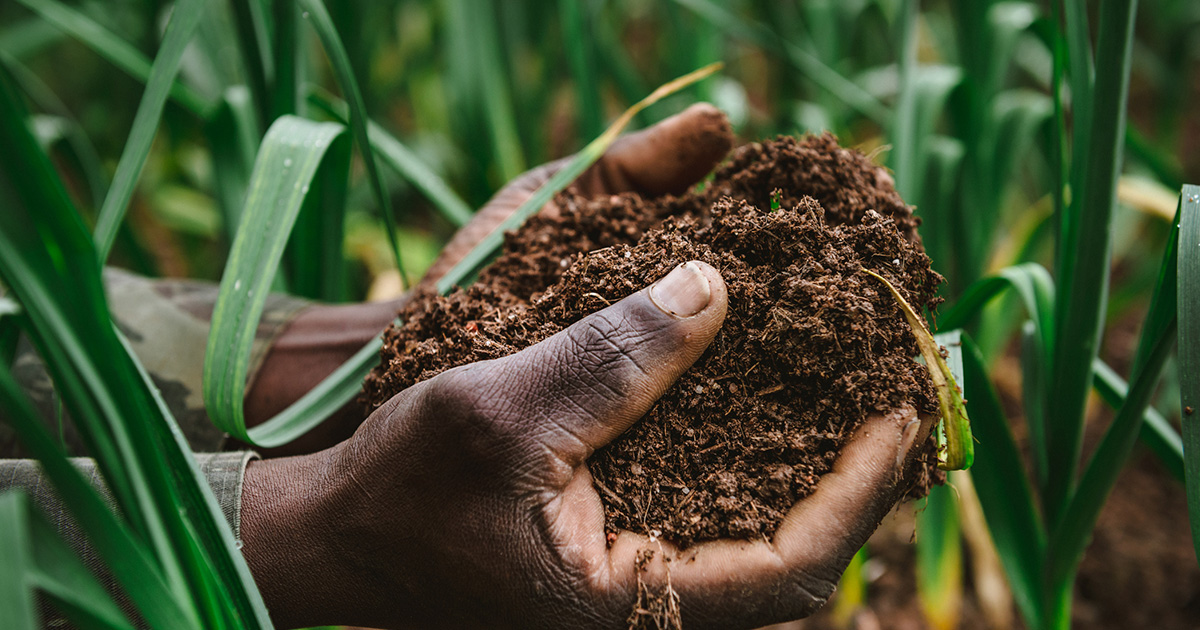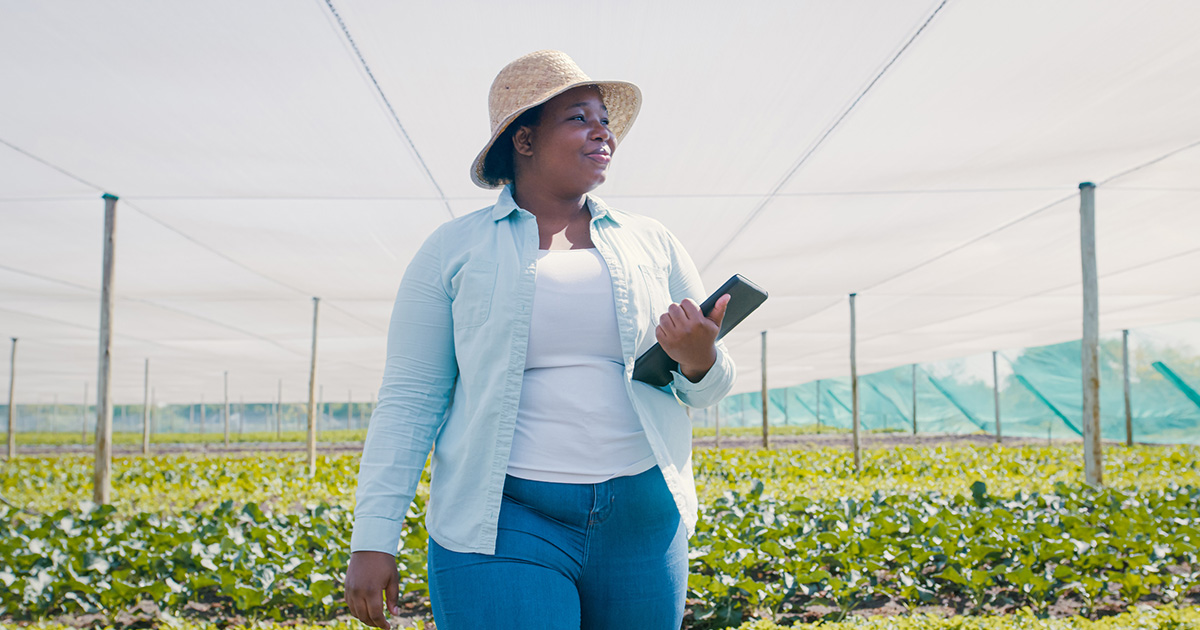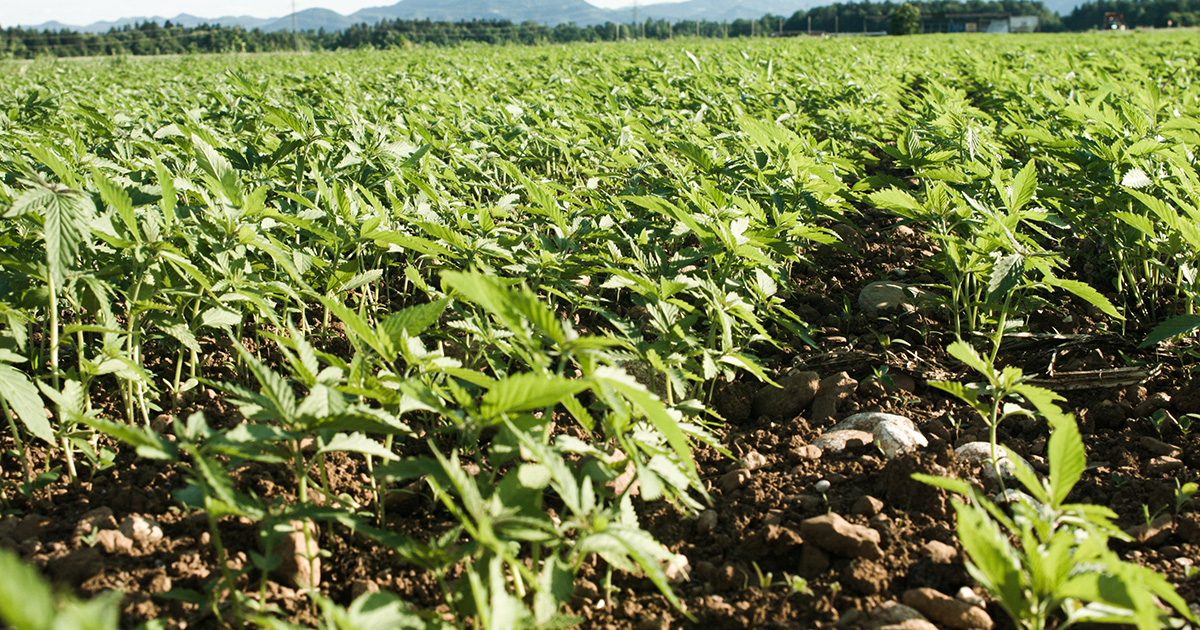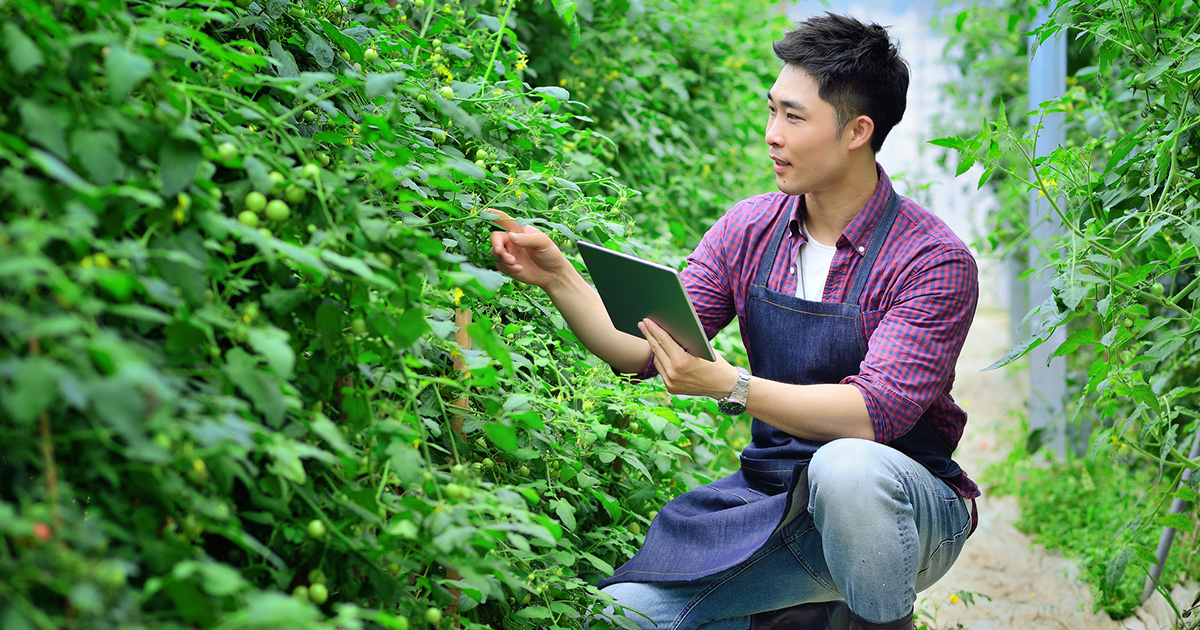Regenerative agriculture is a farming method that is designed to improve the health of the soil and ecosystems.1 It differs from traditional agriculture in a few ways, namely that it focuses on preserving and restoring soil health, rather than just growing crops. By better understanding what regenerative agriculture is, how it works, and some of the benefits it offers farmers and the environment we can begin to see why this method is gaining popularity and apply it to our own lives.
What Is Regenerative Agriculture?
Regenerative agriculture is a system of farming that focuses on three main goals: rebuilding soil health, capturing carbon in the atmosphere, and improving watersheds. Soil health is improved using cover crops, no-till or low-tillage practices, and composting. These practices help to increase the amount of organic matter in the soil, which improves water retention and creates a more hospitable environment for plants and animals.
This is an incredibly important practice, as agriculture makes up 38% of Earth’s terrestrial surface, and uses 70% of our freshwater resources. 2 The end goal is to have a more diverse and thriving ecosystem that can better support those who depend on it.
Why Is Soil Health Important?
Soil is the foundation of life on Earth. It is where plants get their nutrients and water, and it is home to a diverse community of microbes that help to break down organic matter and make nutrients available to plants.3 The health of the soil is essential for the health of the ecosystem. When the soil is healthy, it can provide for the needs of plants and animals. When the soil is unhealthy, it cannot.

Unhealthy soil risks becoming compacted and losing its ability to hold water. This can lead to soil erosion and the loss of topsoil. As topsoil is lost, the soil becomes less able to support plant life. This can cause a decline in crop yields and an increase in the number of chemicals needed to maintain crop production. Unhealthy soil also releases greenhouse gasses, like carbon dioxide and methane, into the atmosphere, contributing to climate change. Finding solutions to improve soil health, like regenerative agriculture, is essential for the future of our planet.
How Did Regenerative Agriculture Come to Be?
The term “regenerative agriculture” became popularized in the 1980s by farmers and scientists who were looking for a way to reverse the trend of soil degradation. They developed this system of farming to improve the health of the land and create a more sustainable way of farming. The goal was to regenerate the soil, rather than just depleting it. The concept picked up steam in the 1990s as more and more farmers began to adopt regenerative agriculture practices after seeing the benefits firsthand.
What Are Some Key Principles of Regenerative Agriculture?
The key components of regenerative agriculture are as follows.
Soil Health
Improving soil health is the foundation of regenerative agriculture. By using cover crops, no-till or low-tillage practices, and composting, farmers can increase the amount of organic matter in the soil, improve water retention, and create a more hospitable environment for plants and animals.
Carbon Sequestration
Carbon sequestration is the process of capturing carbon dioxide from the atmosphere and storing it in the soil. This helps to offset the greenhouse gas emissions that are contributing to climate change.
Water Management
Water management is another important aspect of regenerative agriculture. By managing water resources wisely, farmers can improve the health of watersheds and reduce the amount of pollution that runs off into waterways.
Diversity
Creating a diverse ecosystem is another goal of regenerative agriculture. This can be done by using a variety of cover crops, planting trees and shrubs, and incorporating animals into the farm ecosystem.
What Are the Key Regenerative Agriculture Benefits?

There are many benefits to regenerative agriculture, both for farmers and the environment. Some of the benefits include:
Increased Yield
Regenerative agriculture has been shown to offer various yield advantages over traditional farming practices.4 This is due to the improved soil health that is characteristic of regenerative farms.
Reduced Water Usage
One of the benefits of regenerative agriculture is that it can help to reduce water usage. This is because regenerative farms often use cover crops and other practices that help to improve water retention in the soil. With this increased water retention, farmers can reduce irrigation needs.
Soil Health
Regenerative agriculture helps to improve the health of the soil, which leads to healthier plants and animals. The increased organic matter in the soil also helps to improve water retention and creates a more hospitable environment for plants.
Water Management
By managing water resources wisely, regenerative agriculture can help to improve the health of watersheds and reduce pollution. Water management practices like cover crops and contour farming can help to reduce the amount of runoff from farms, which helps to improve water quality in rivers and streams.
Diversity
Regenerative agriculture helps to create a more diverse ecosystem, which is more resilient to pests and diseases. With each component of the ecosystem working together, the overall system is stronger and more resistant to disturbance.
Carbon Sequestration
By sequestering carbon in the soil, regenerative agriculture can help to offset the greenhouse gas emissions that are contributing to climate change.
As you can see, regenerative agriculture offers a lot of benefits to both farmers and the environment. With the power to improve soil health, reduce pollution, and offset greenhouse gas emissions, regenerative agriculture is a farming method that can help us create a more sustainable future.
Disadvantages of Regenerative Agriculture
Although there are many benefits to regenerative agriculture, there are also some disadvantages that should be considered. Some of the disadvantages include the following.
High Initial Costs
The upfront costs of implementing regenerative agriculture can be high, and it may take a few years to see a return on investment. This is because regenerative agriculture often requires different equipment and infrastructure than traditional farming practices. Farmers may not have the necessary equipment on hand or enough money to invest in new equipment. This keeps many small-scale farmers from being able to implement regenerative agriculture on their farms.
Time Commitment
Regenerative agriculture requires a significant time commitment, as it takes time to establish cover crops and develop diverse ecosystems. Time is also needed to monitor the health of the soil and make adjustments to practices as necessary. This can be a challenge for farmers who are already stretched thin with the day-to-day tasks of running a farm.
Labor Intensive
Regenerative agriculture is labor-intensive, as it requires farmers to plant and manage cover crops, develop compost systems, and implement other regenerative practices. This can be a challenge for farmers who do not have a lot of labor available and already have a staff that is stretched thin.
Despite the disadvantages, regenerative agriculture is a promising farming method that offers many benefits to both farmers and the environment. If you’re interested in the value of regenerative agriculture, then the time and effort required to implement this farming method may be worth it in the long run.
Examples of Regenerative Agriculture in Action
Many farmers around the world are using regenerative agriculture to improve their land and create a more sustainable future. The following are some generic examples to help give you a better idea of how this might look in action:
Planting Cover Crops

Cover crops are plants that are grown to protect and improve the health of the soil. They help to increase organic matter, improve water retention, and reduce erosion. Hemp is a popular example of a cover crop that is being used in regenerative agriculture. It has deep roots that help to aerate the soil and it also produces a great deal of biomass, which can be used as a natural mulch. It helps to regenerate soil with little water needed and absolutely no chemicals.
No-Till or Low-Tillage
No-till or low-tillage is a farming practice that minimizes the disturbance of the soil and leads to better water management, especially in dry conditions.5 This helps to reduce erosion and improve the health of the soil.
Composting
Composting is the process of decomposing organic matter, such as food scraps and manure, into a fertilizer that can be used to improve the health of the soil.
Water Management
Water management is the process of using water resources wisely to reduce pollution and improve the health of watersheds.
By using these regenerative agriculture practices, farmers can help to improve the health of the soil, create a more diverse ecosystem, and reduce carbon emissions and greenhouse gasses.
What Are the Implications of Regenerative Agriculture in the Future?
As the world continues to face challenges like climate change and water scarcity, regenerative agriculture will become an increasingly important farming method. This is because regenerative agriculture offers several potential solutions to these challenges.
For example, by sequestering carbon in the soil, regenerative agriculture can help to offset the emissions that are contributing to climate change. In addition, by improving water management and creating more diverse ecosystems, regenerative agriculture can help to reduce the impact of drought and other water scarcity issues.
As we look to the future, regenerative agriculture will play an important role in creating a more sustainable world. In a time when the need for sustainability is more important than ever, regenerative agriculture is a farming method to which we should all be paying attention.
Working Together to Create a More Sustainable Future

There is no question that regenerative agriculture is a promising farming method with the potential to create a more sustainable future. However, it is important to remember that regenerative agriculture is just one piece of the puzzle. To create a truly sustainable future, we need to work together to implement a variety of different farming solutions, including:
Reducing Our Reliance on Synthetic Pesticides and Fertilizers
One of the goals of regenerative agriculture is to reduce our reliance on synthetic pesticides and fertilizers. This is because these products can have a negative impact on the environment that goes beyond the farm. They can pollute the air, water, and soil, and they can also contribute to climate change.
Improving Water Management
As mentioned before, water management is an important part of regenerative agriculture. By improving our water management practices, we can reduce pollution, improve the health of watersheds, and conserve this vital resource.
Encouraging Crop Rotation
Crop rotation is a farming practice that involves growing different crops in a specific order. This helps to improve the health of the soil, can reduce the need for synthetic pesticides and fertilizers, and can also help to conserve water.
Encouraging Sustainable Land Management Practices
Sustainable land management practices, such as reforestation and agroforestry, can help to improve the health of the environment and make agriculture more sustainable.
Solar and Wind Power
Solar and wind power are renewable energy sources that can help to reduce the emissions that come from farming. Applications of solar and wind power on farms are becoming more common, and they offer a promising solution for reducing the impact of agriculture on the environment.
Sources
- Giller, K. E., Hijbeek, R., Andersson, J. A., & Sumberg, J. (2021). Regenerative agriculture: an agronomic perspective. Outlook on Agriculture, 50(1), 13-25. https://doi.org/10.1177/0030727021998063
- Gordon, E., Davila, F., & Riedy, C. (2021). Transforming landscapes and mindscapes through regenerative agriculture. Agriculture and human values, 1-18. https://doi.org/10.1007/s10460-021-10276-0
- Friedrichsen, C. N., Hagen-Zakarison, S., Friesen, M. L., McFarland, C. R., Tao, H., & Wulfhorst, J. D. (2021). Soil health and well-being: redefining soil health based upon a plurality of values. Soil Security, 2, 100004. https://doi.org/10.1016/j.soisec.2021.100004
- McLennon, E., Dari, B., Jha, G., Sihi, D., & Kankarla, V. (2021). Regenerative agriculture and integrative permaculture for sustainable and technology driven global food production and security. Agronomy Journal, 113(6), 4541-4559. https://doi.org/10.1002/agj2.20814
- Liebhard, G., Klik, A., Neugschwandtner, R. W., & Nolz, R. (2022). Effects of tillage systems on soil water distribution, crop development, and evaporation and transpiration rates of soybean. Agricultural Water Management, 269, 107719. https://doi.org/10.1016/j.agwat.2022.107719

I’m a kid at heart disguised as a cannabis researcher and business owner. I’ve always enjoyed providing insight in the form of reviews (anime, video games, etc.) So, when the cannabis industry took off, it sparked my interest in researching, reviewing, and chronicling all things within. When I’m not researching, I’m spending time with my family, riding my motorcycle, and finding new entrepreneurial pursuits.

